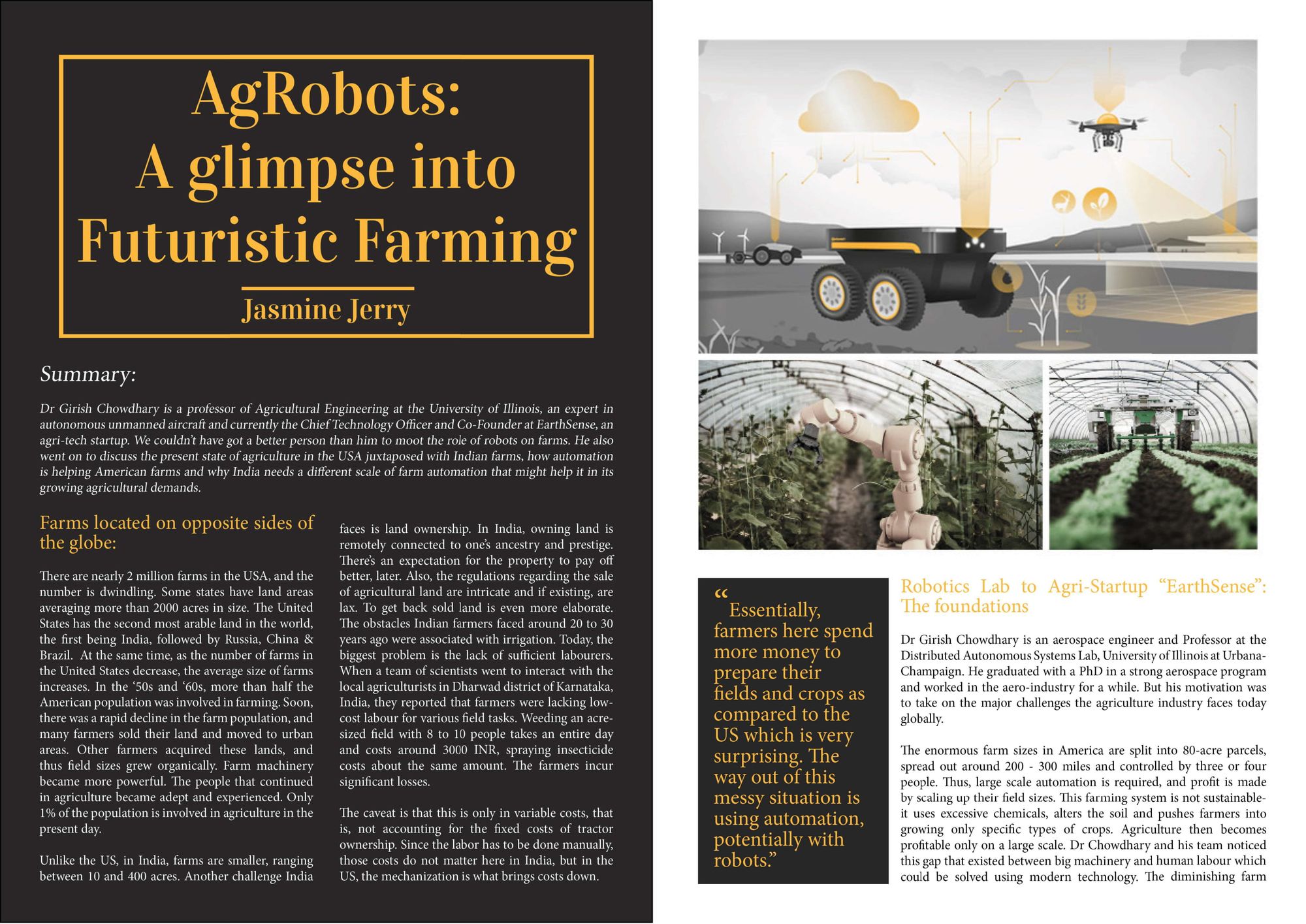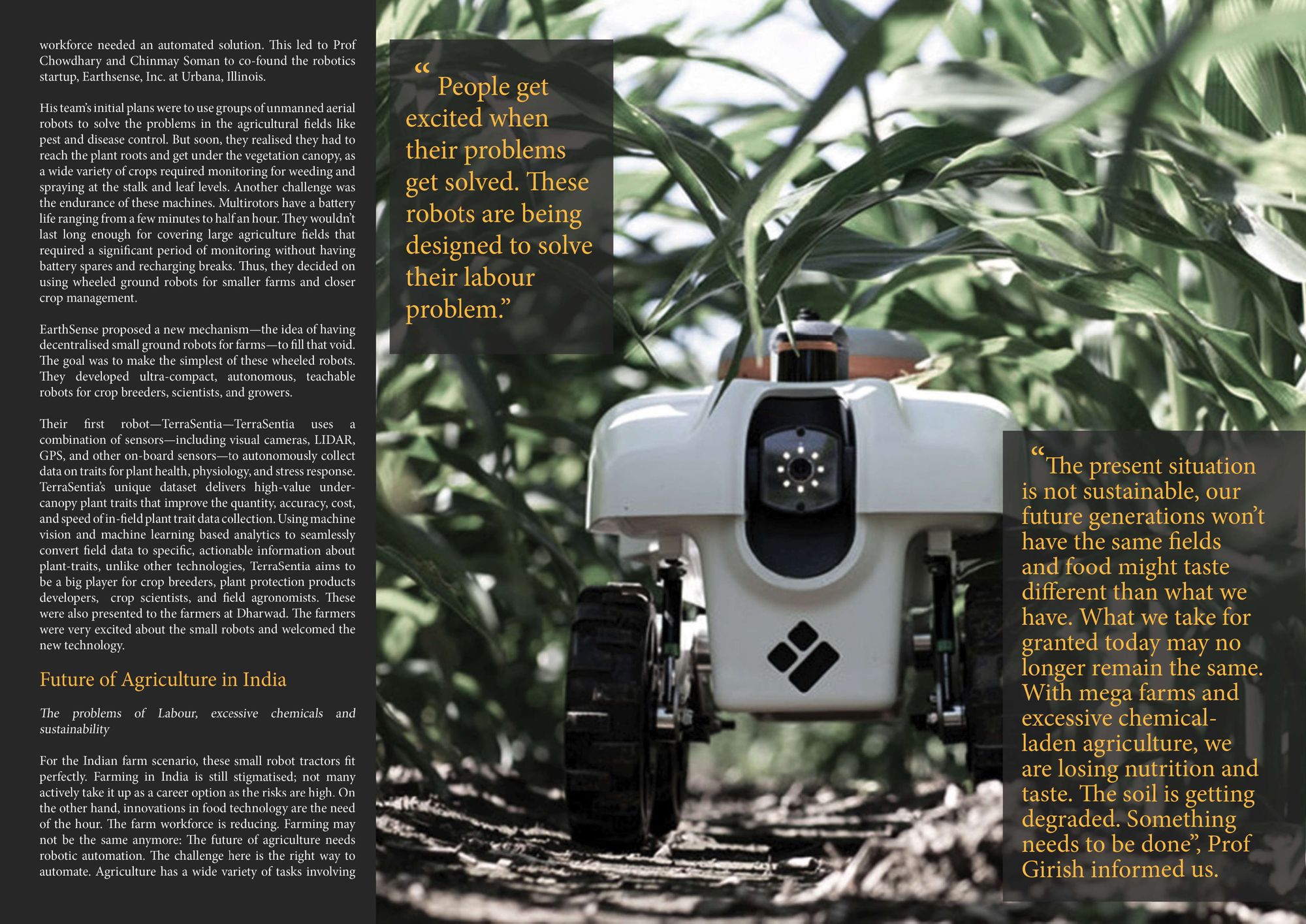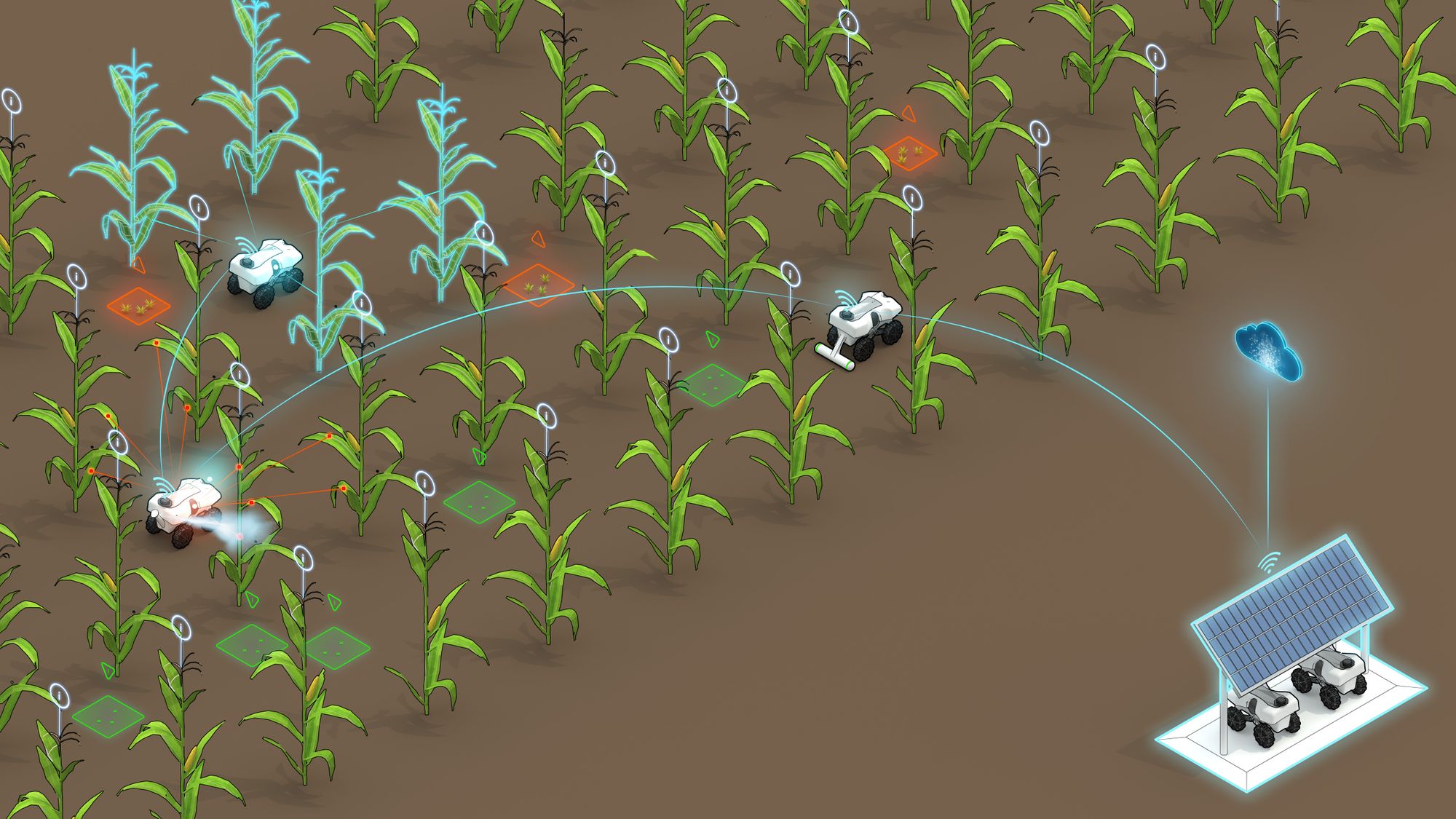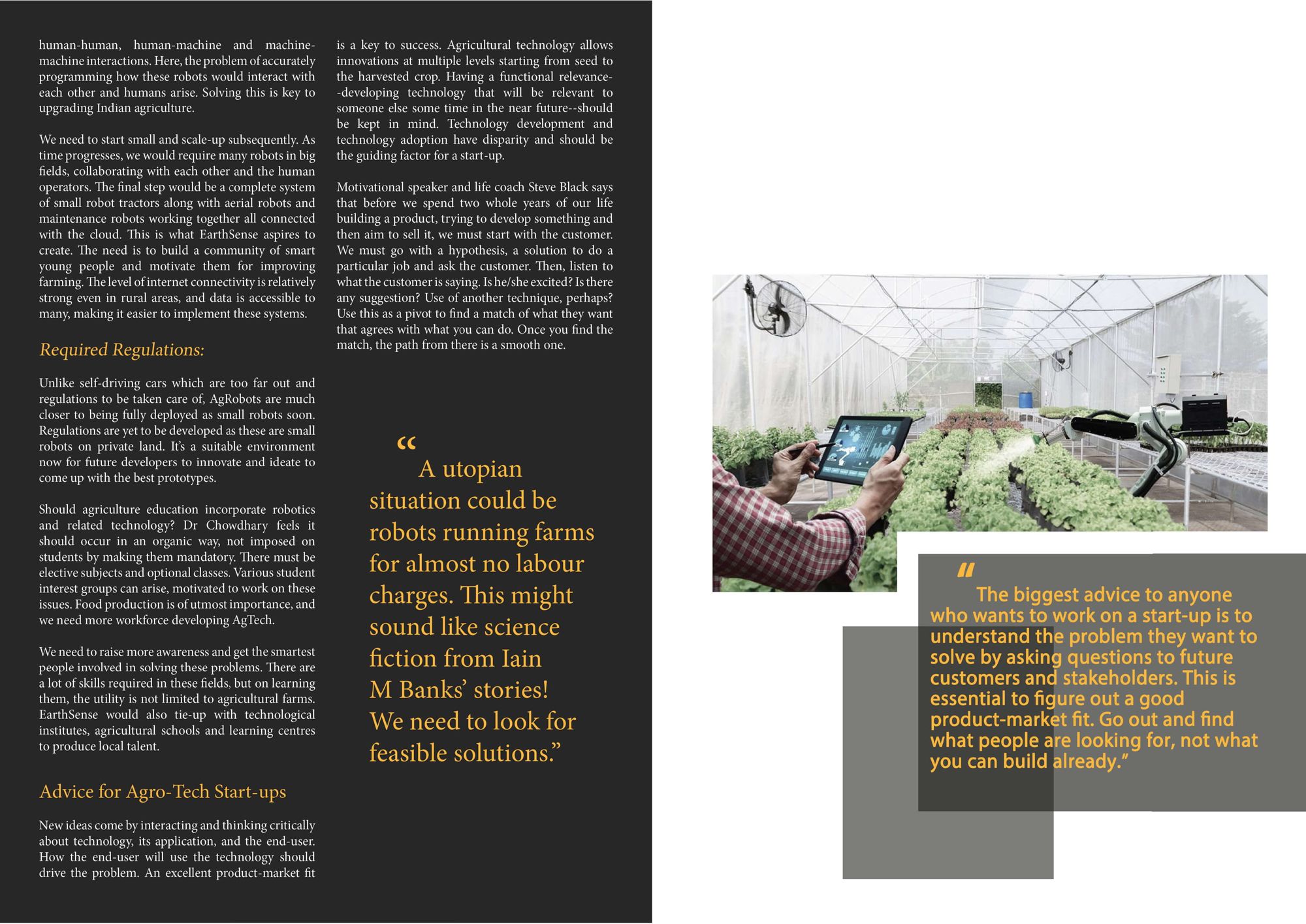Farms located on opposite sides of the globe
There are nearly 2 million farms in the USA, and the number is dwindling. Some states have land areas averaging more than 2000 acres in size. The United States has the second most arable land in the world, the first being India, followed by Russia, China & Brazil. At the same time, as the number of farms in the United States decrease, the average size of farms increases.
In the '50s and '60s, more than half the American population was involved in farming. Soon, there was a rapid decline in the farm population, and many farmers sold their land and moved to urban areas. Other farmers acquired these lands, and thus field sizes grew organically. Farm machinery became more powerful. The people that continued in agriculture became adept and experienced. Only 1% of the population is involved in agriculture in the present day.
Unlike the US, in India, farms are smaller, ranging between 10 and 400 acres. Another challenge India faces is land ownership. In India, owning land is remotely connected to one's ancestry and prestige. There's an expectation for the property to pay off better, later. Also, the regulations regarding the sale of agricultural land are intricate and if existing, are lax. To get back sold land is even more elaborate. The obstacles Indian farmers faced around 20 to 30 years ago were associated with irrigation.
Today, the biggest problem is the lack of sufficient labourers. When a team of scientists went to interact with the local agriculturists in Dharwad district of Karnataka, India, they reported that farmers were lacking low-cost labour for various field tasks. Weeding an acre-sized field with 8 to 10 people takes an entire day and costs around 3000 INR, spraying insecticide costs about the same amount. The farmers incur significant losses.
Essentially, farmers here spend more money to prepare their fields and crops as compared to the US which is very surprising. The way out of this messy situation is using automation, potentially with robots.
The caveat is that this is only in variable costs, that is, not accounting for the fixed costs of tractor ownership. Since the labor has to be done manually, those costs do not matter here in India, but in the US, the mechanization is what brings costs down.
Robotics Lab to Agri-Startup “EarthSense”: The foundations
Dr Girish Chowdhary is an aerospace engineer and Professor at the Distributed Autonomous Systems Lab, University of Illinois at Urbana-Champaign. He graduated with a PhD in a strong aerospace program and worked in the aero-industry for a while. But his motivation was to take on the major challenges the agriculture industry faces today globally.

The enormous farm sizes in America are split into 80-acre parcels, spread out around 200 - 300 miles and controlled by three or four people. Thus, large scale automation is required, and profit is made by scaling up their field sizes. This farming system is not sustainable-it uses excessive chemicals, alters the soil and pushes farmers into growing only specific types of crops. Agriculture then becomes profitable only on a large scale. Dr Chowdhary and his team noticed this gap that existed between big machinery and human labour which could be solved using modern technology. The diminishing farm workforce needed an automated solution. This led to Prof Chowdhary and Chinmay Soman to co-found the robotics startup, Earthsense, Inc. at Urbana, Illinois.
“The present situation is not sustainable, our future generations won’t have the same fields and food might taste different than what we have. What we take for granted today may no longer remain the same. With mega farms and excessive chemical-laden agriculture, we are losing nutrition and taste. The soil is getting degraded. Something needs to be done”, Prof Girish informed us.
His team's initial plans were to use groups of unmanned aerial robots to solve the problems in the agricultural fields like pest and disease control. But soon, they realised they had to reach the plant roots and get under the vegetation canopy, as a wide variety of crops required monitoring for weeding and spraying at the stalk and leaf levels.
Another challenge was the endurance of these machines. Multirotors have a battery life ranging from a few minutes to half an hour. They wouldn't last long enough for covering large agriculture fields that required a significant period of monitoring without having battery spares and recharging breaks. Thus, they decided on using wheeled ground robots for smaller farms and closer crop management.
EarthSense proposed a new mechanism—the idea of having decentralised small ground robots for farms—to fill that void. The goal was to make the simplest of these wheeled robots. They developed ultracompact, autonomous, teachable robots for crop breeders, scientists, and growers.
Their first robot—TerraSentia—TerraSentia uses a combination of sensors—including visual cameras, LIDAR, GPS, and other on-board sensors—to autonomously collect data on traits for plant health, physiology, and stress response. TerraSentia’s unique dataset delivers high-value under-canopy plant traits that improve the quantity, accuracy, cost, and speed of in-field plant trait data collection.

Using machine vision and machine learning based analytics to seamlessly convert field data to specific, actionable information about plant-traits, unlike other technologies, TerraSentia aims to be a big player for crop breeders, plant protection products developers, crop scientists, and field agronomists. These were also presented to the farmers at Dharwad. The farmers were very excited about the small robots and welcomed the new technology.
People get excited when their problems get solved. These robots are being designed to solve their labour problem.
Future of Agriculture in India
The problems of labour, excessive chemicals and sustainability
For the Indian farm scenario, these small robot tractors fit perfectly. Farming in India is still stigmatised; not many actively take it up as a career option as the risks are high. On the other hand, innovations in food technology are the need of the hour. The farm workforce is reducing. Farming may not be the same anymore: The future of agriculture needs robotic automation.
The challenge here is the right way to automate. Agriculture has a wide variety of tasks involving human-human, human-machine and machine-machine interactions. Here, the problem of accurately programming how these robots would interact with each other and humans arise. Solving this is key to upgrading Indian agriculture.
We need to start small and scale-up subsequently. As time progresses, we would require many robots in big fields, collaborating with each other and the human operators. The final step would be a complete system of small robot tractors along with aerial robots and maintenance robots working together all connected with the cloud.
This is what EarthSense aspires to create. The need is to build a community of smart young people and motivate them for improving farming. The level of internet connectivity is relatively strong even in rural areas, and data is accessible to many, making it easier to implement these systems.
Required Regulations
Unlike self-driving cars which are too far out and regulations to be taken care of, AgRobots are much closer to being fully deployed as small robots soon. Regulations are yet to be developed as these are small robots on private land. It's a suitable environment now for future developers to innovate and ideate to come up with the best prototypes.

A utopian situation could be robots running farms for almost no labour charges. This might sound like science fiction from Iain M Banks’ stories! We need to look for feasible solutions.
Should agriculture education incorporate robotics and related technology? Dr Chowdhary feels it should occur in an organic way, not imposed on students by making them mandatory. There must be elective subjects and optional classes. Various student interest groups can arise, motivated to work on these issues. Food production is of utmost importance, and we need more workforce developing AgTech.
We need to raise more awareness and get the smartest people involved in solving these problems. There are a lot of skills required in these fields, but on learning them, the utility is not limited to agricultural farms. EarthSense would also tie-up with technological institutes, agricultural schools and learning centres to produce local talent.

Advice for Agro-Tech Start-ups
New ideas come by interacting and thinking critically about technology, its application, and the end-user. How the end-user will use the technology should drive the problem.
The biggest advice to anyone who wants to work on a start-up is to understand the problem they want to solve by asking questions to future customers and stakeholders. This is essential to figure out a good product-market fit. Go out and find what people are looking for, not what you can build already.
An excellent product-market fit is a key to success. Agricultural technology allows innovations at multiple levels starting from seed to the harvested crop. Having a functional relevance--developing technology that will be relevant to someone else some time in the near future--should be kept in mind. Technology development and technology adoption have disparity and should be the guiding factor for a start-up.


